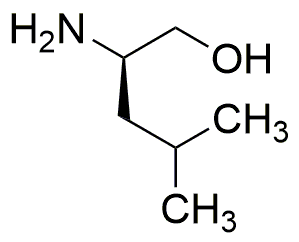D-Leucinol is widely utilized in research focused on:
- Pharmaceutical Development: It serves as a building block in the synthesis of various pharmaceuticals, particularly in the development of amino acid derivatives that can enhance drug efficacy.
- Food Industry: D-Leucinol is used as a flavoring agent and a potential additive in nutritional supplements, providing a natural source of amino acids that can enhance taste and nutritional value.
- Biotechnology: In protein engineering, it is employed to modify protein structures, improving their stability and functionality, which is crucial for enzyme production and biocatalysis.
- Cosmetic Formulations: The compound is incorporated into skincare products for its moisturizing properties, helping to improve skin hydration and texture.
- Agricultural Applications: D-Leucinol is explored as a growth enhancer in plant nutrition, promoting better crop yields and resilience against environmental stress.
General Information
Properties
Safety and Regulations
Applications
D-Leucinol is widely utilized in research focused on:
- Pharmaceutical Development: It serves as a building block in the synthesis of various pharmaceuticals, particularly in the development of amino acid derivatives that can enhance drug efficacy.
- Food Industry: D-Leucinol is used as a flavoring agent and a potential additive in nutritional supplements, providing a natural source of amino acids that can enhance taste and nutritional value.
- Biotechnology: In protein engineering, it is employed to modify protein structures, improving their stability and functionality, which is crucial for enzyme production and biocatalysis.
- Cosmetic Formulations: The compound is incorporated into skincare products for its moisturizing properties, helping to improve skin hydration and texture.
- Agricultural Applications: D-Leucinol is explored as a growth enhancer in plant nutrition, promoting better crop yields and resilience against environmental stress.
Documents
Safety Data Sheets (SDS)
The SDS provides comprehensive safety information on handling, storage, and disposal of the product.
Product Specification (PS)
The PS provides a comprehensive breakdown of the product’s properties, including chemical composition, physical state, purity, and storage requirements. It also details acceptable quality ranges and the product's intended applications.
Certificates of Analysis (COA)
Search for Certificates of Analysis (COA) by entering the products Lot Number. Lot and Batch Numbers can be found on a product’s label following the words ‘Lot’ or ‘Batch’.
*Catalog Number
*Lot Number
Certificates Of Origin (COO)
This COO confirms the country where the product was manufactured, and also details the materials and components used in it and whether it is derived from natural, synthetic, or other specific sources. This certificate may be required for customs, trade, and regulatory compliance.
*Catalog Number
*Lot Number
Safety Data Sheets (SDS)
The SDS provides comprehensive safety information on handling, storage, and disposal of the product.
DownloadProduct Specification (PS)
The PS provides a comprehensive breakdown of the product’s properties, including chemical composition, physical state, purity, and storage requirements. It also details acceptable quality ranges and the product's intended applications.
DownloadCertificates of Analysis (COA)
Search for Certificates of Analysis (COA) by entering the products Lot Number. Lot and Batch Numbers can be found on a product’s label following the words ‘Lot’ or ‘Batch’.
*Catalog Number
*Lot Number
Certificates Of Origin (COO)
This COO confirms the country where the product was manufactured, and also details the materials and components used in it and whether it is derived from natural, synthetic, or other specific sources. This certificate may be required for customs, trade, and regulatory compliance.


